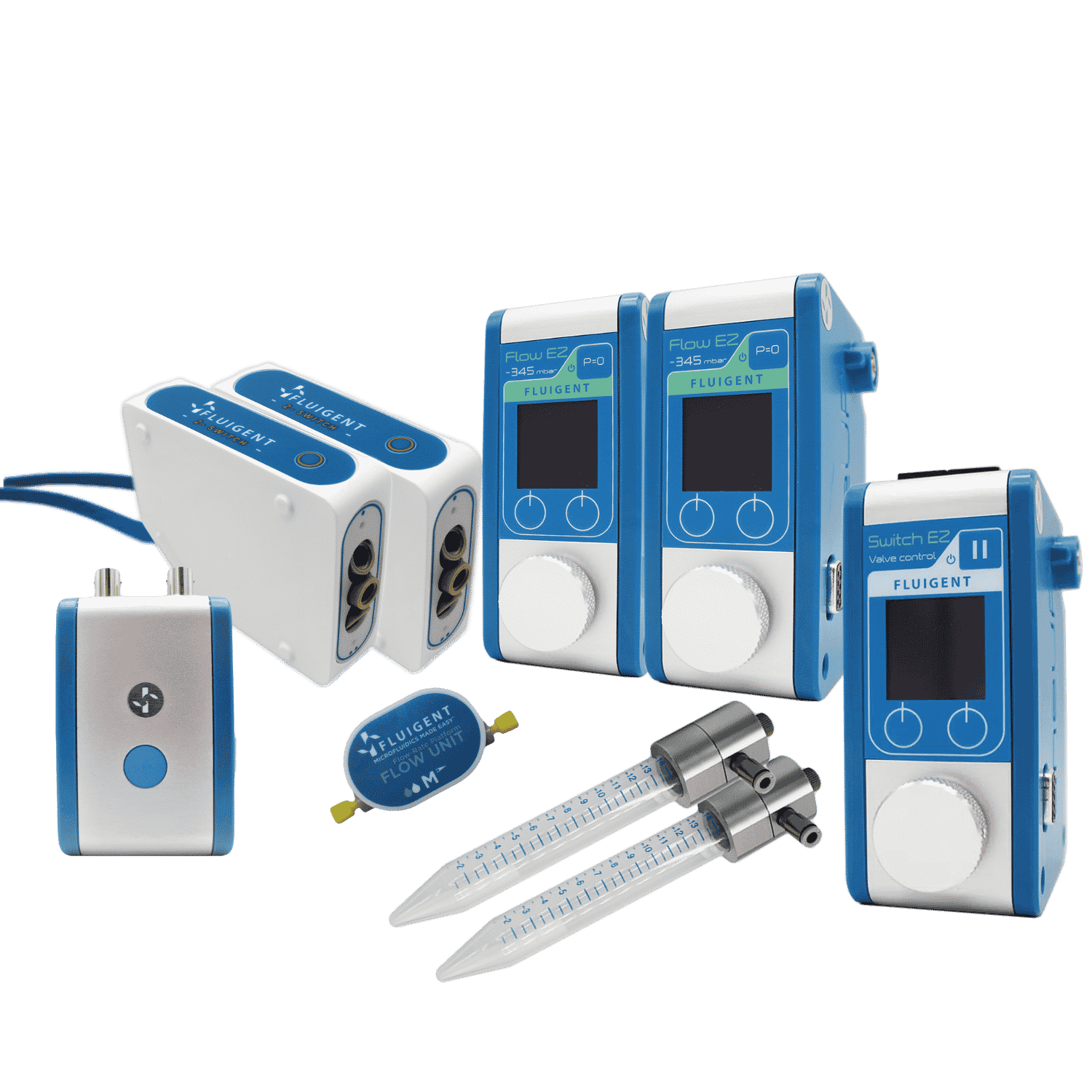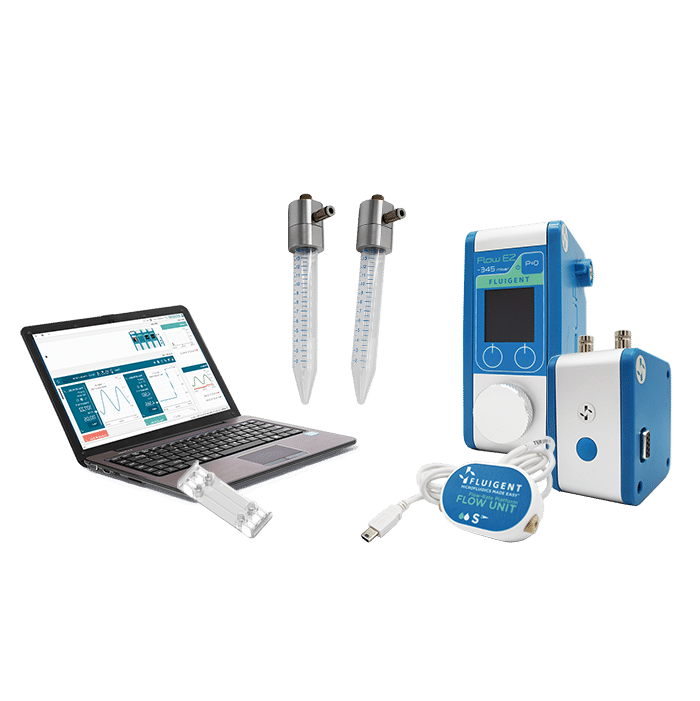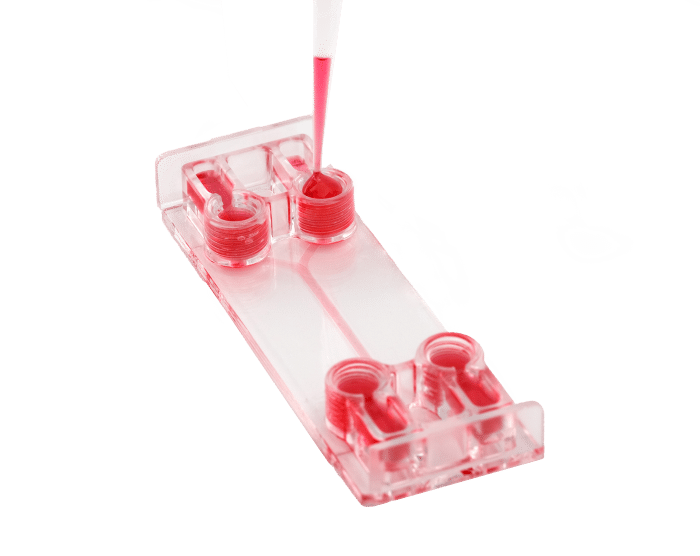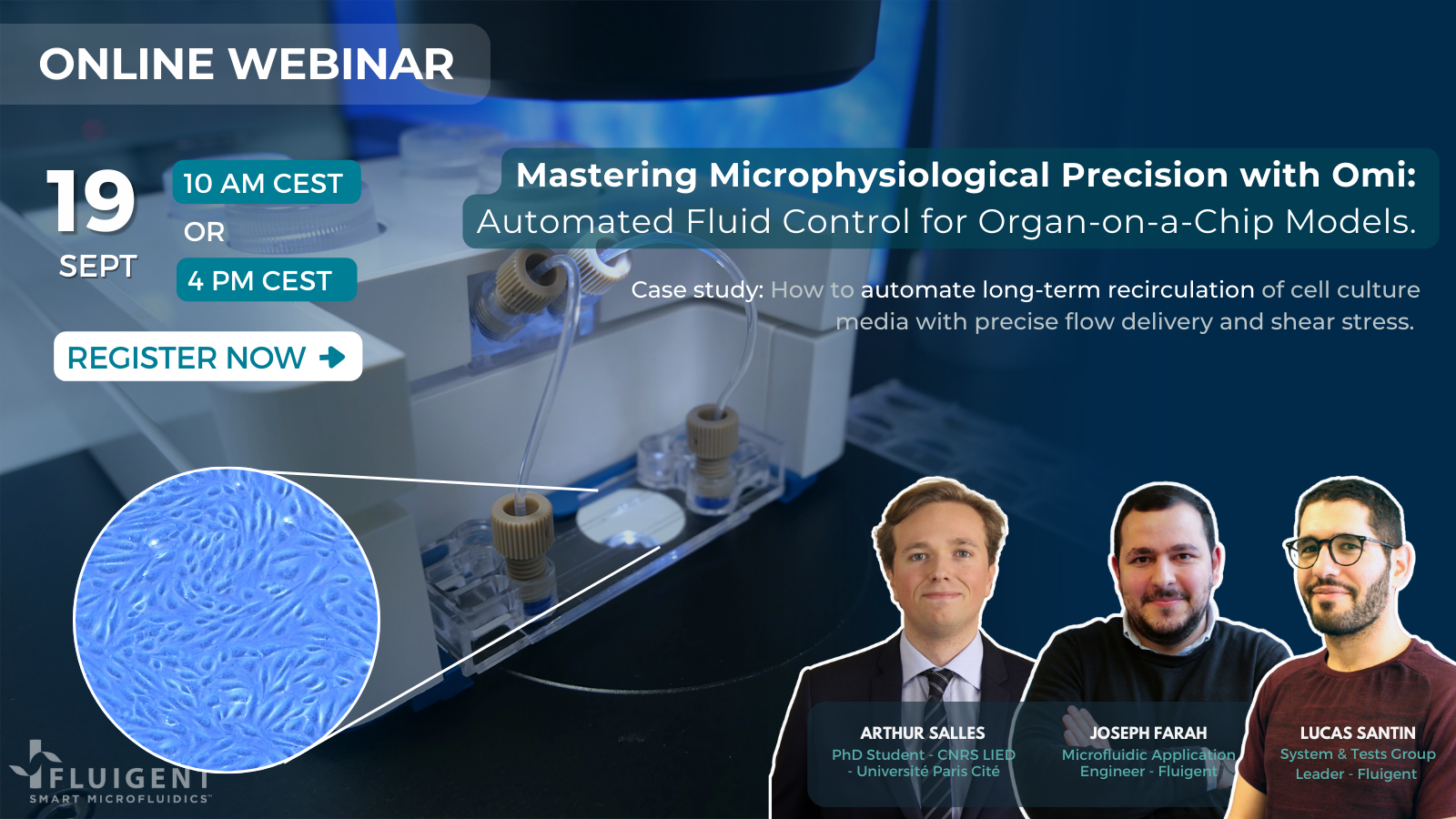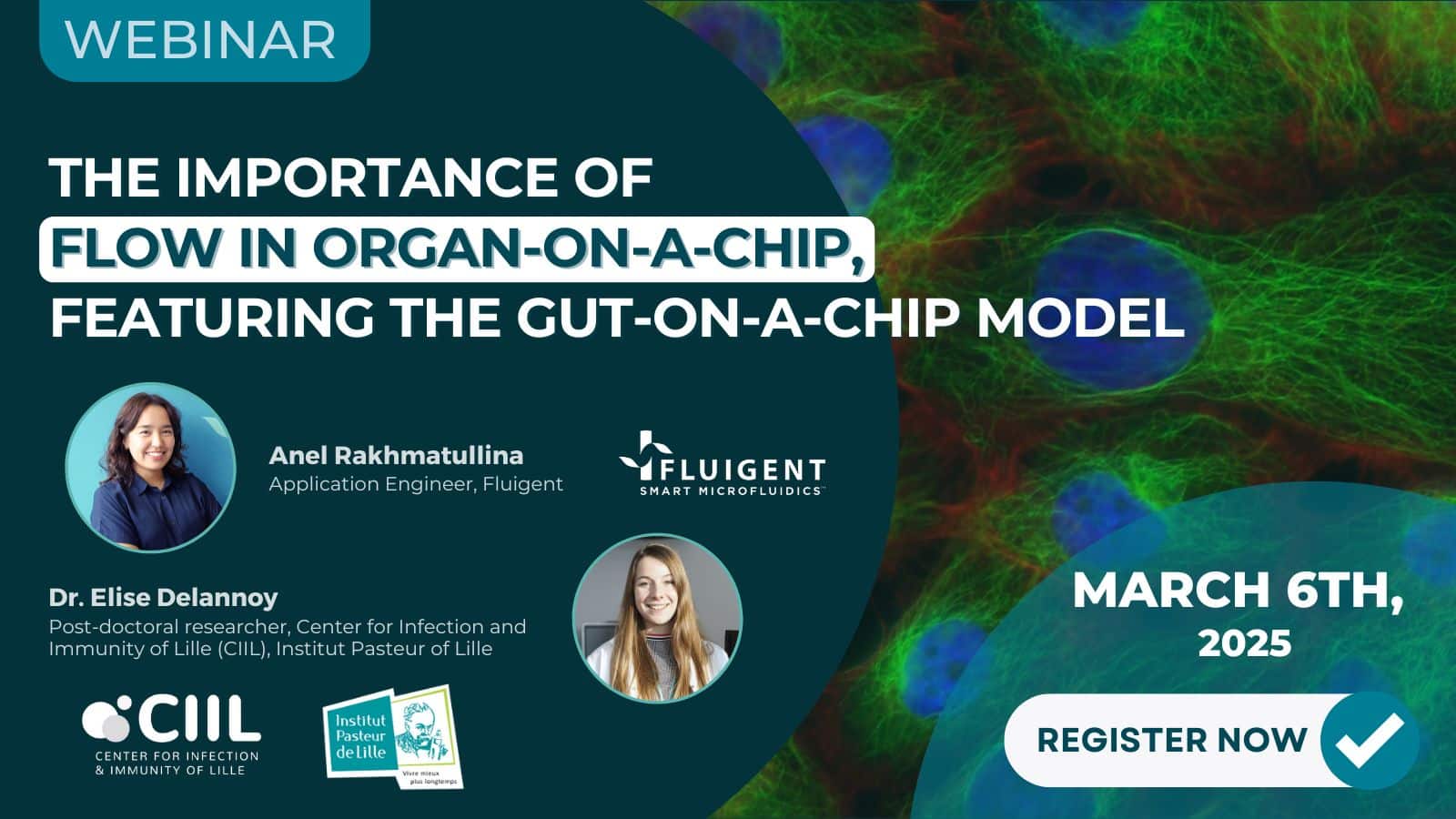Join us for an online session exploring dual organ-on-a-chip (OOC) model supported by Omi™ OOAC Platform advances the study of drug disposition.
Using tacrolimus, a widely prescribed immunosuppressant with known nephrotoxic risks, this session demonstrates how a liver–kidney OOC platform can reveal pharmacokinetic processes, such as hepatic metabolism and renal clearance of tacrolimus and transporter dynamics influencing drug accumulation and elimination.
By recreating cross-organ communication in a microfluidic system, this platform offers human-relevant insights for pharmacology, transplantation research, and precision medicine.
📅 Date: November 25th, 2025.
Key Takeaways:
- How a dual HepaRG–RPTEC/TERT1 model simulates connected hepatic and renal functions.
- How microfluidics and Omi™ enable advanced drug testing – Presented by Anel
- Case Study: Tacrolimus Disposition in a Liver–Kidney OOC Model – Presented by Isy Petit
Insights into tacrolimus disposition, transporter regulation, and nephrotoxicity. - Future Outlook in Pharmacology and Transplantation Research – Presented by Dr.Nicolas Vedrenne
- How automated media recirculation enables 48-hour dynamic studies
- Metabolomics profiling revealing compartment-specific responses
Speakers:
- Anel Rakhmatullina – Life-Science Applications Engineer, Fluigent
- Dr. Nicolas Vedrenne – Associate Professor (MCU) in « Toxicology and Environmental Health », University of Limoges Pharmacology and Transplantation UMR 1248
- Isy Petit – PhD Candidate in « Drug Membrane Transporters », University of Limoges Pharmacology and Transplantation UMR 1248
Discover Omi, Automated Organ-on-chip platform
Omi is an automated platform that helps reproduce the microphysiological behavior of organs inside microfluidic chips. It is compatible any type of chips to sustain different cell culture types or organ on chip models (Gut, Skin…)
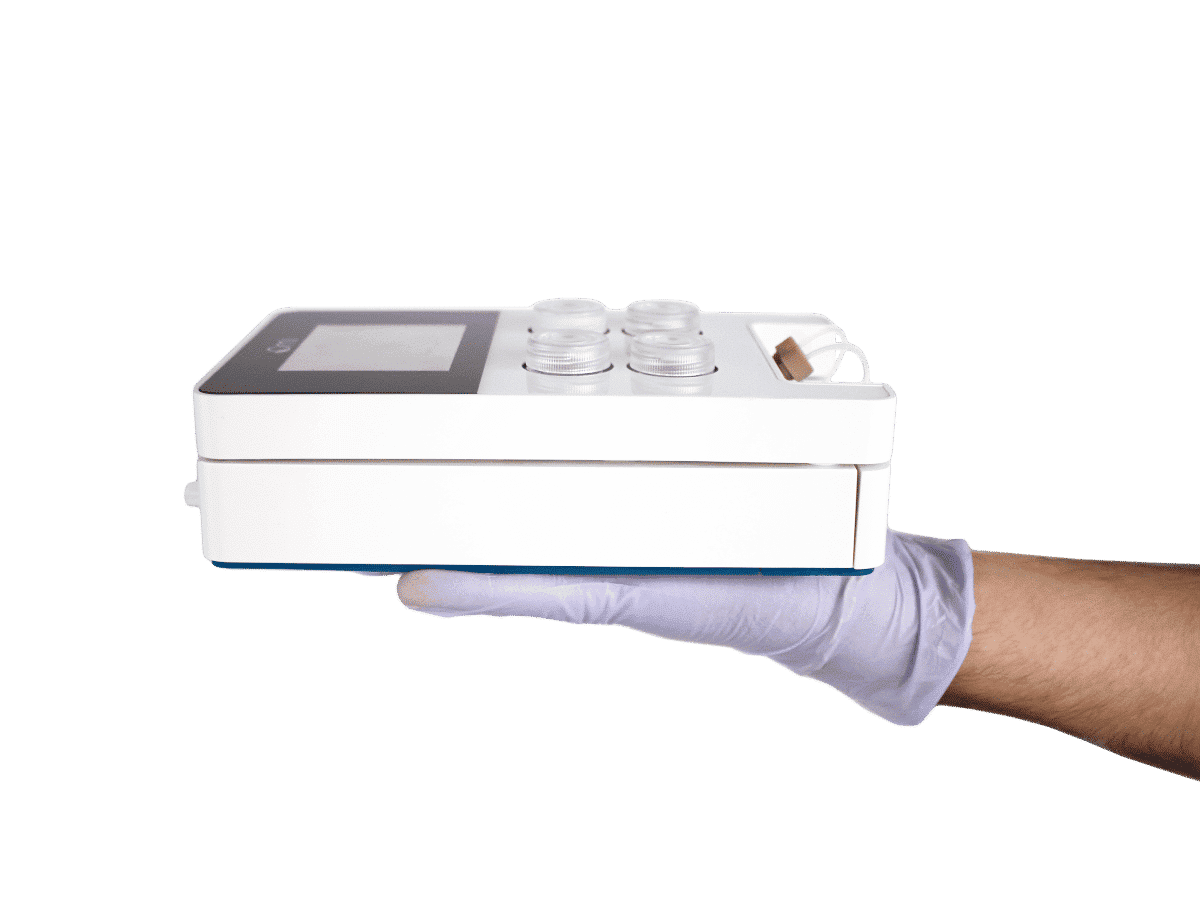
Building the Liver–Kidney Dual OOC Model: Access the Application Note
Tacrolimus is a commonly used immunosuppressant for liver transplant patients, but its use is limited by a narrow therapeutic window, variable pharmacokinetics, and risk of nephrotoxicity.
To better understand how the liver and kidney jointly process this drug, researchers developed a interlinked organ-on-chip (OOC) model using the Omi™ Dual Platform. This system combines HepaRG spheroids and RPTEC/TERT1 cells in a dynamic microfluidic circuit, allowing real-time study of hepatic metabolism and renal transporter activity under continuous recirculation.
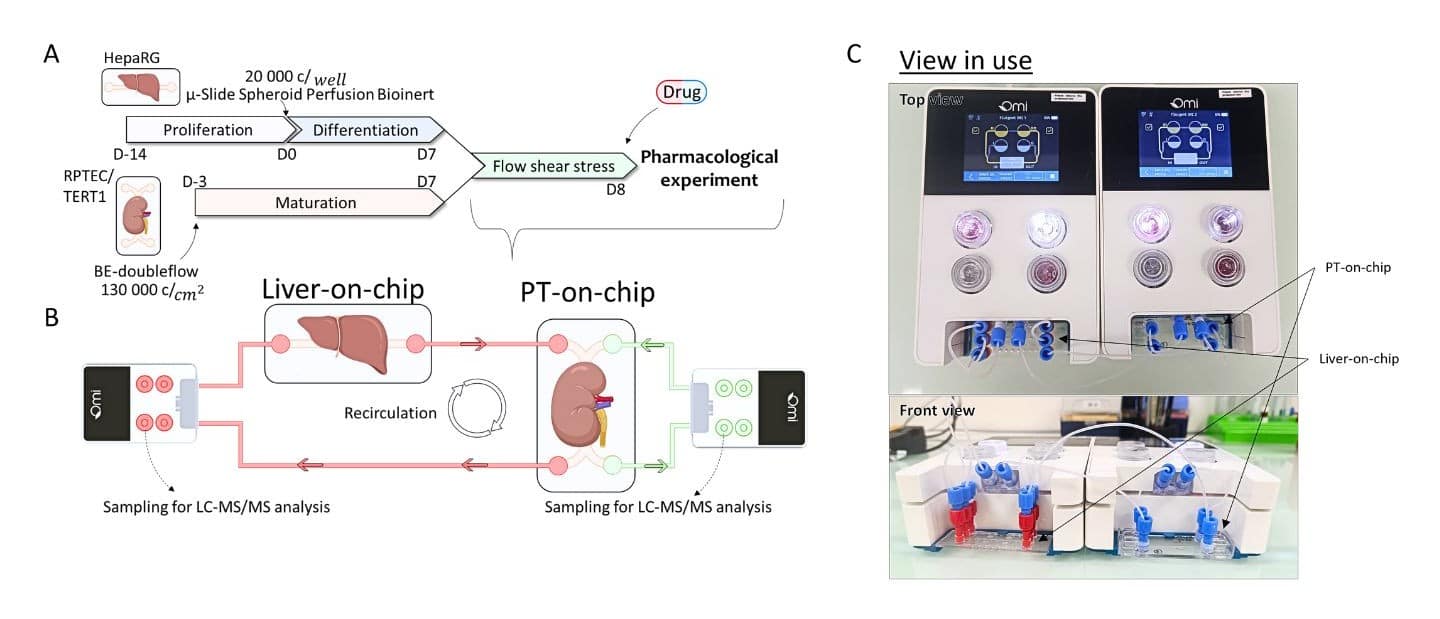
Figure. Overview of Liver-Kidney Dual OOC setup
More OOAC Solutions
More Webinar on OOAC or Omi
Webinar – Mastering Microphysiological Precision with Omi
Watch the RecordingWebinar: Importance of Flow in Organ-on-a-Chip, featuring the Gut-on-a-Chip Model
Watch the Recording
To explore further on the OOAC Platform
- Microfluidic Application Notes
Controlling Flow Rate and Shear Stress with Omi™ to Study Endothelial Cell Response
Read more - Microfluidic Application Notes
Gut-on-Chip Model Development Using OOAC Platform, Omi
Read more - Microfluidics Case Studies
Gut-on-Chip Modeling: From Chip Development to Perfusion
Read more - Expert Reviews: Basics of Microfluidics
Optimizing Microfluidic Perfusion: Best Practices and Innovations
Read more - Microfluidic Application Notes
Peristaltic Pump vs Pressure-Based Microfluidic Flow Control for Organ on Chip applications
Read more - Microfluidics Case Studies
CNRS/UTC: study of a liver-on-a-chip model
Read more - Microfluidic Application Notes
Long-term fluid recirculation system for Organ-on-a-Chip applications
Read more - Expert Reviews: Basics of Microfluidics
5 Key Tips for Starting Organ-on-Chip Models
Read more
